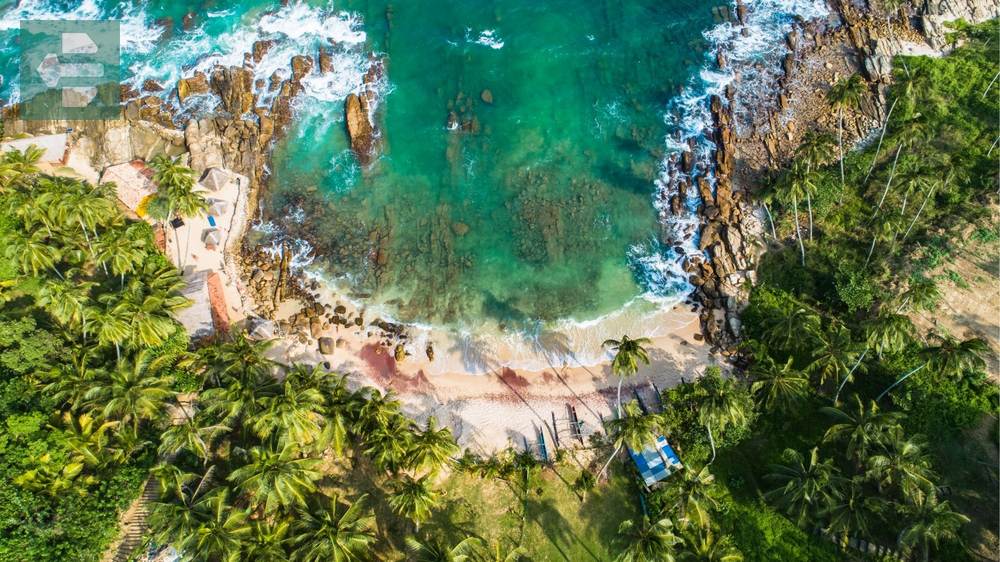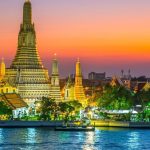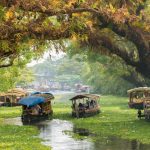Sri Lanka offers pristine beaches, ancient temples, and wildlife adventures that few destinations can match. The best places to travel in Sri Lanka include Trincomalee's turquoise waters, Jaffna's Tamil heritage, and Arugam Bay's legendary surf breaks. From Wilpattu's elusive leopards to Horton Plains' dramatic cliffs, this island delivers experiences that stay with you long after you leave.
Keep reading as we explore twelve extraordinary destinations that showcase why Sri Lanka remains one of Asia's most captivating travel secrets.
List of Contents
- 1. Trincomalee: Where Blue Whales Dance
- 2. Jaffna: The Soul of Tamil Sri Lanka
- 3. Batticaloa: The Singing Fish Mystery
- 4. Negombo: Gateway to Authentic Sri Lanka
- 5. Tangalle: Where Turtles Return Home
- 6. Arugam Bay: Surf's Perfect Right-Hand Point
- 7. Hikkaduwa: Coral Gardens Meet Surf Culture
- 8. Bentota: Rivers Meet the Indian Ocean
- 9. Pasikudah: Shallow Paradise
- 10. Kalpitiya: Where Dolphins Play
- 11. Wilpattu National Park: Land of a Thousand Lakes
- 12. Horton Plains: Where the World Ends
- Your Sri Lankan Adventure Awaits
1. Trincomalee: Where Blue Whales Dance
Trincomalee sits on one of the world's finest natural harbors. The Portuguese, Dutch, and British all recognized its strategic value—so will you.
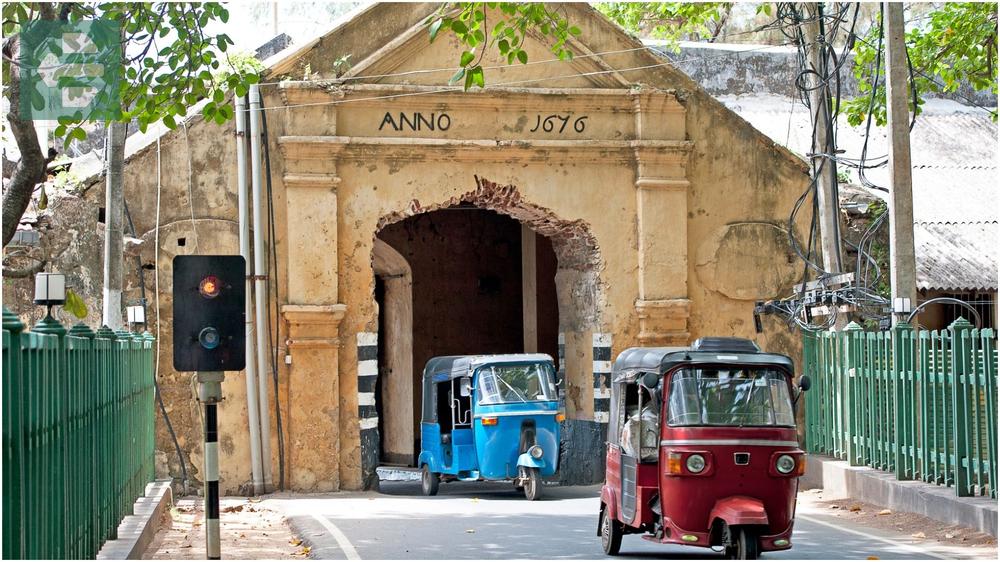
The snorkeling at Pigeon Island remains unmatched. Crystal waters reveal healthy coral gardens where reef sharks glide past like underwater shadows. I watched a hawksbill turtle surface for air just meters away, completely unbothered by my presence.
Fort Frederick guards the coastline with weathered stone walls. Inside, the colorful Koneswaram Temple perches on the cliff edge, offering panoramic ocean views that make the climb worthwhile.
Quick Facts:
- Peak Season: April-September
- How to Get There: Bus from Colombo (5 hours) or domestic flight
- Entrance Fees: Fort Frederick $10 USD
- Suggested Stay: 3-4 days
- Must-See: Pigeon Island, Uppuveli Beach, Koneswaram Temple, whale watching tours
2. Jaffna: The Soul of Tamil Sri Lanka
Jaffna feels different from the rest of Sri Lanka. Tamil culture flows through every street corner, temple bell, and spice-scented breeze.
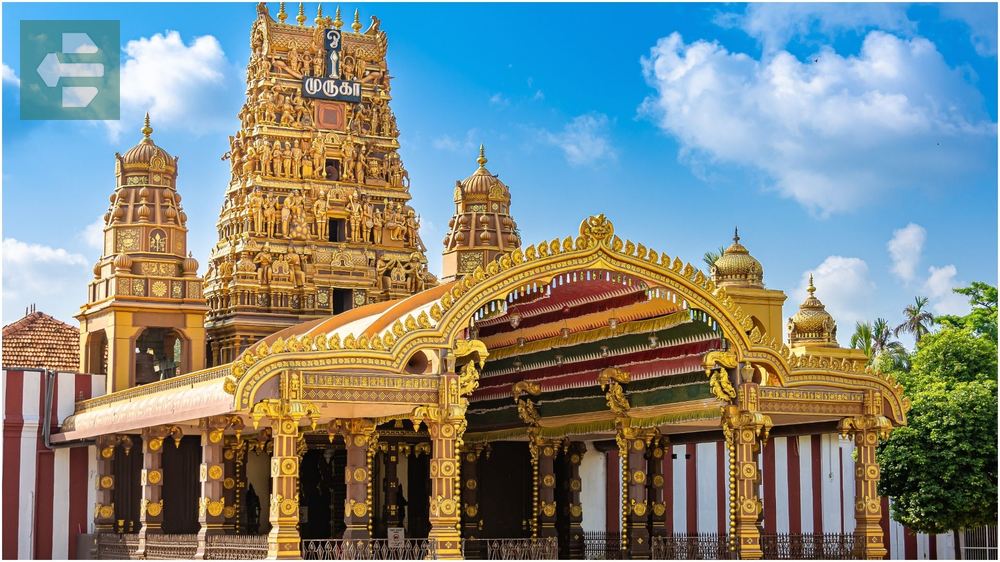
The Nallur Kandaswamy Kovil temple complex dominates the cultural landscape. Dedicated to Murugan, its towering gopuram and intricate murals tell stories of devotion spanning centuries. Men must enter bare-chested—a tradition that connects visitors to ancient customs.
Jaffna's residents rebuilt their city from civil war ruins with remarkable resilience. Their warmth toward visitors reflects a community proud of its survival and heritage.
Quick Facts:
- Peak Season: May-September
- How to Get There: Train from Colombo (8 hours) or domestic flight
- Entrance Fees: Free for temples
- Suggested Stay: 2-3 days
- Must-See: Nallur Temple, Jaffna Fort, Delft Island, Keerimalai Springs
3. Batticaloa: The Singing Fish Mystery
Batticaloa earned the nickname “Land of the Singing Fish” from a peculiar phenomenon. On certain nights, locals claim you can hear musical sounds from the lagoon waters. Scientists remain divided on the source.
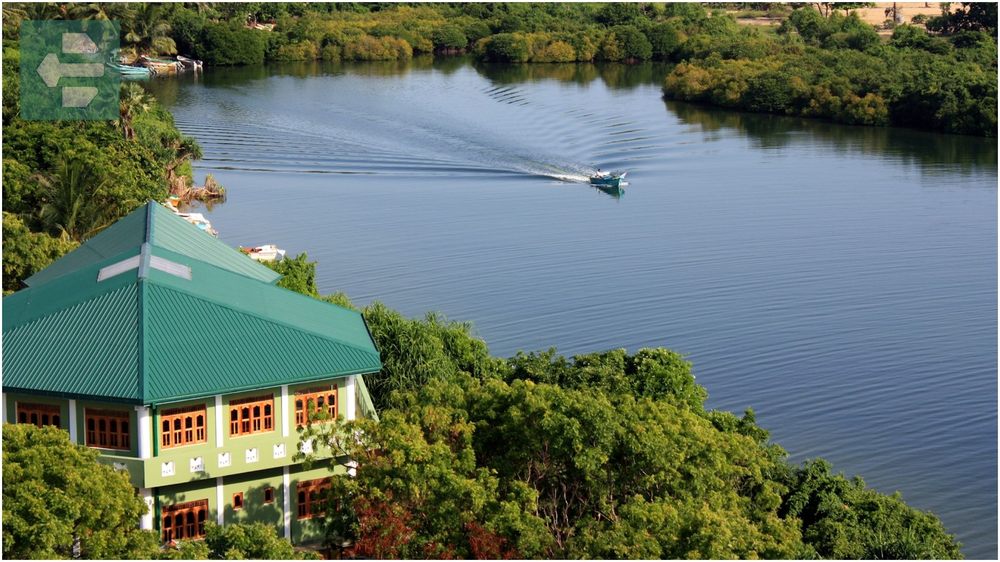
The Dutch Fort anchors the old town with thick walls and government offices occupying colonial chambers. Nearby, the Kallady Bridge stretches across the lagoon—Sri Lanka's oldest iron bridge still carries both vehicles and memories.
The three interconnected lagoons create a paradise for birdwatchers. Herons, kingfishers, and migratory species find sanctuary in the mangrove-fringed waters that support local fishing communities.
Quick Facts:
- Peak Season: March-September
- How to Get There: Bus from Colombo (6 hours)
- Entrance Fees: Fort entry included in town access
- Suggested Stay: 2 days
- Must-See: Dutch Fort, Kallady Bridge, lagoon boat tours, Bird Island
4. Negombo: Gateway to Authentic Sri Lanka
Most visitors rush through Negombo to reach other destinations. They miss one of Sri Lanka's most authentic fishing communities.
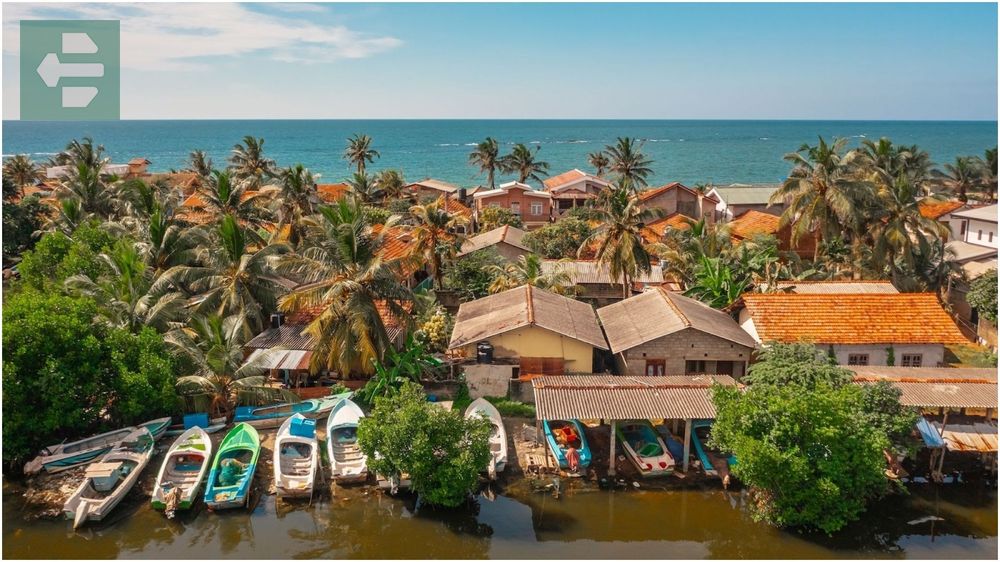
The fish markets operate like clockwork. Arrive by 6:30am to witness the controlled chaos of auction calls, sorting trays, and boats unloading their overnight catches. The wet market showcases fresh seafood while the dry market displays rows of fish curing under palm leaf mats.
St. Mary's Church stands as one of Sri Lanka's oldest Catholic churches, its wooden carvings and stained glass reflecting Portuguese colonial influence that shaped this coastal town centuries ago.
Quick Facts:
- Peak Season: December-March
- How to Get There: 40 minutes from Colombo airport
- Entrance Fees: Free for markets and church
- Suggested Stay: 1-2 days
- Must-See: Fish markets, Negombo Lagoon, St. Mary's Church, Dutch Canal
5. Tangalle: Where Turtles Return Home
Tangalle's coastline stretches for miles without interruption. Unlike busier southern beaches, this area maintains its unhurried pace and natural beauty.

Rekawa Beach hosts one of Sri Lanka's most important turtle nesting sites. Between January and July, five species return to lay eggs in the same sands where they were born. Watching a mother turtle complete this ancient ritual under moonlight creates memories that last lifetimes.
The coastline offers hidden gems like Silent Beach and Goyambokka Beach. Each has its own character—some perfect for swimming, others ideal for sunset contemplation.
Quick Facts:
- Peak Season: November-April
- How to Get There: Bus from Colombo (4 hours) or Galle (2 hours)
- Entrance Fees: Turtle watching tours from $10 USD
- Suggested Stay: 3-4 days
- Must-See: Rekawa turtle beach, Hummanaya Blowhole, Mulkirigala Temple
6. Arugam Bay: Surf's Perfect Right-Hand Point
Arugam Bay produces some of the world's finest right-hand point breaks. The waves peel for 200-400 meters, offering rides that exhaust your legs and ignite your soul.

Main Point delivers the most power but draws crowds. For solitude, grab a tuk-tuk to explore Whiskey Point, Pottuvil Point, or Elephant Rock. Each spot has unique characteristics that reward the adventurous.
At sunrise, I climbed Elephant Rock to watch surfers take their first waves. The ocean stretched endlessly eastward while village life awakened below—a perfect reminder of why this bay captivates everyone who visits.
Quick Facts:
- Peak Season: April-October
- How to Get There: Bus from Colombo (8 hours) or domestic flight to Ampara
- Entrance Fees: Free beaches, board rental $3/day
- Suggested Stay: 4-7 days
- Must-See: Main Point surf break, Elephant Rock, Kudumbigala Monastery, Panama Beach
7. Hikkaduwa: Coral Gardens Meet Surf Culture
Hikkaduwa pioneered Sri Lanka's beach tourism in the 1970s. The coral sanctuary just offshore remains one of the island's most accessible snorkeling sites.

Glass-bottom boats reveal underwater gardens where parrotfish, angelfish, and sea turtles navigate between coral formations. The marine sanctuary protects this ecosystem while allowing sustainable tourism to flourish.
The town balances relaxation with adventure. Days end with fresh seafood on beachfront terraces while waves crash nearby—a soundtrack that never loses its appeal.
Quick Facts:
- Peak Season: November-April
- How to Get There: Train from Colombo (2.5 hours) or bus (2 hours)
- Entrance Fees: Coral garden tours from $5 USD
- Suggested Stay: 3-4 days
- Must-See: Coral sanctuary, turtle hatchery, Seenigama Temple, surf breaks
8. Bentota: Rivers Meet the Indian Ocean
Bentota's river system creates a natural playground where mangroves, cinnamon islands, and water sports converge with golden beaches.
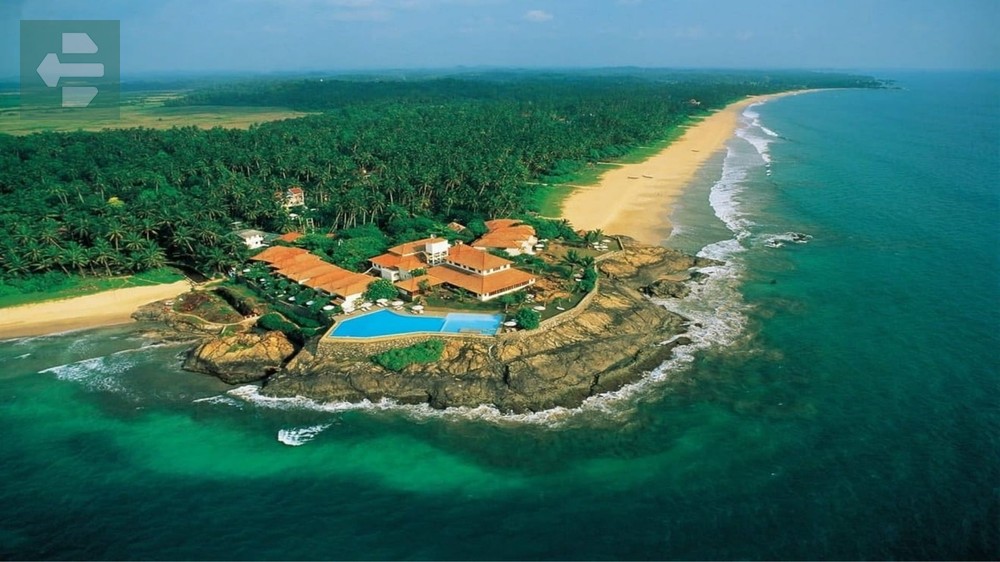
Geoffrey Bawa's Lunuganga Garden showcases tropical landscape architecture at its finest. The renowned architect spent decades perfecting this estate, creating outdoor rooms that blur boundaries between nature and design.
River safaris reveal another Sri Lanka—crocodiles sun themselves on muddy banks while monitor lizards disappear into vegetation. Local guides point out medicinal plants and explain how cinnamon cultivation shaped this region's economy.
Quick Facts:
- Peak Season: November-April
- How to Get There: Train from Colombo (2 hours) or highway drive (1.5 hours)
- Entrance Fees: Lunuganga Garden $10 USD
- Suggested Stay: 2-3 days
- Must-See: Bentota River safari, Lunuganga Garden, turtle hatchery, Brief Garden
9. Pasikudah: Shallow Paradise
Pasikudah boasts some of the world's longest stretches of shallow water. You can walk 200 meters offshore and still stand comfortably—perfect for families and nervous swimmers.

The coral reefs create natural barriers that calm the waves while supporting marine life. Snorkeling reveals tropical fish species thriving in protected waters that rarely exceed chest-deep.
This eastern coast location means fewer crowds than southern beaches. The peaceful atmosphere encourages long lazy days where time moves with the gentle rhythm of lapping waves.
Quick Facts:
- Peak Season: May-September
- How to Get There: Bus from Colombo (6 hours) via Batticaloa
- Entrance Fees: Free beach access
- Suggested Stay: 3-4 days
- Must-See: Pasikudah Bay, coral reefs, Batticaloa Lagoon, Kalkudah Beach
10. Kalpitiya: Where Dolphins Play
Kalpitiya's lagoon and offshore waters host one of Sri Lanka's largest dolphin populations. Spinner dolphins perform their aerial acrobatics while larger pods cruise the deeper channels.

The Dutch Fort and church remind visitors of colonial maritime importance, but today's attractions lie in the water. Kitesurfing conditions rank among Asia's best, while whale watching season brings blue whales close to shore.
Local fishermen know the waters intimately. Their knowledge transforms ordinary boat trips into educational journeys through ecosystems that support both marine life and coastal communities.
Quick Facts:
- Peak Season: November-March (dolphin watching), May-September (kitesurfing)
- How to Get There: Bus from Colombo (3 hours) to Puttalam, then local transport
- Entrance Fees: Dolphin tours from $15 USD
- Suggested Stay: 2-3 days
- Must-See: Dolphin watching, Dutch Fort, kite surfing, Wilpattu access
11. Wilpattu National Park: Land of a Thousand Lakes
Wilpattu contains over 100 natural rainwater lakes called “villus” that attract wildlife year-round. These seasonal pools create the park's unique ecosystem and offer Sri Lanka's best leopard viewing opportunities.

The park covers 1,317 square kilometers of diverse habitat—from dense jungle to open grasslands. Patient observers spot sloth bears, elephants, and crocodiles alongside 200+ bird species that call Wilpattu home.
Early morning game drives provide the best wildlife encounters. The mist rising from villus creates an almost prehistoric atmosphere as animals gather at water sources for their morning drinks.
Quick Facts:
- Peak Season: February-October
- How to Get There: 4WD vehicle from Anuradhapura (1.5 hours)
- Entrance Fees: $25 USD per person plus vehicle fees
- Suggested Stay: 2 days
- Must-See: Leopard tracking, villu ecosystems, sloth bear habitats, ancient ruins
12. Horton Plains: Where the World Ends
Horton Plains sits 2,100 meters above sea level on Sri Lanka's highest plateau. The park's centerpiece, World's End, plunges 870 meters into the valley below—a sheer drop that literally takes your breath away.

Start hiking by 6am to reach World's End before clouds obscure the view. The 9-kilometer loop trail passes through unique montane grasslands and cloud forests found nowhere else on the island.
Baker's Falls provides a refreshing midpoint where cascading water creates natural pools. The return journey reveals different perspectives of this high-altitude ecosystem that supports endemic species adapted to cooler mountain conditions.
Quick Facts:
- Peak Season: January-March
- How to Get There: From Nuwara Eliya by 4WD (1 hour early morning)
- Entrance Fees: $25 USD per person
- Suggested Stay: Day trip from Nuwara Eliya
- Must-See: World's End cliff, Baker's Falls, endemic flora, sunrise views
Your Sri Lankan Adventure Awaits
These twelve destinations showcase why the best places to travel in Sri Lanka offer experiences that transform ordinary vacations into extraordinary journeys. Each location tells unique stories through ancient temples, pristine beaches, and wildlife encounters that exist nowhere else on Earth.
Pack light but dream big. Sri Lanka rewards the curious traveler with memories that sparkle long after the tropical tan fades.
Your adventure begins the moment you decide to explore this remarkable island where every sunrise brings new discoveries.
